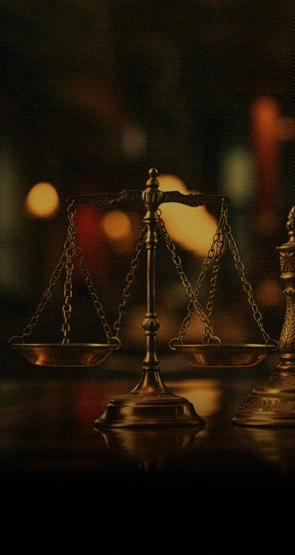3 Ways Alcohol and Marijuana Prohibition Match-Up

More and more states are legalizing marijuana for recreational use, seeking the economic benefits that pioneers like Colorado and Washington currently enjoy.
Michigan lawmakers are voting on Marijuana legalization this week, without even sending it to the ballot, and Florida Democrats are still pushing for legalization in their state.
Amid this evolution of U.S. drug legislation, it’s interesting to revisit what happened with alcohol prohibition in the early 20th century. It’s not surprising that some major parallels exist between the marijuana ban and alcohol prohibition.
#1. Prohibition Used to Further Racist Agendas
Though health and salvation were often the public battle cry of prohibitionists, prejudice was always an underlying motivation.
Between 1920 and 1933, the 18th amendment and Volstead Act banned the production, sale, and distribution of alcohol in the United States.
The prohibition movement was led by white, Protestant Americans, namely the anti-Saloon league (“ASL”) and Wayne B. Wheeler followers, whose cutthroat pressure politics overran the moderate temperance movements of the time.
“The ASL focused doggedly on defeating “wet” politicians in favor of pro-prohibition “dry” politicians and were not above using coercion and intimidation to reach their goals,” California criminal defense lawyer Joseph Tully writes in his new book, California: State of Collusion. “So singular was the ASL’s focus, that any group aligned with dry causes was considered their ally, regardless of political affiliation, including, suffragettes and racists.”
Irish and Italian immigrants had deep cultural and religious roots in the consumption of alcohol. Pushing temperance was a way to subjugate the new Catholic Americans and make their arrival and stay less welcome.
Southern landed gentry promoted the notion of prohibition as a way to promote ‘Southern values’ of racial segregation, subordinating women, and ‘honor.’ Prohibition was a way to prevent blacks from enjoying the same privileges as white gentlemen, who could drink in their homes and private clubs.
Alcohol abuse was painted as a problem for Indians and Mexicans, and temperance as a way to keep them subdued.
For similar reasons, the state of California prohibited cannabis (a full 24 years before alcohol prohibition). California’s Poison Act of 1913 banned all possession of “extracts, tinctures, or other narcotic preparations of Indian hemp and loco-weed for preparations and compounds.”
“The terms used to describe cannabis in the 1913 law are telling,” writes Tully. “Terms like ‘Indian hemp’ and ‘loco weed’ allude to East Asians and Hispanics and hint at the close ties between drug bans and the vast prejudice against immigrants at the time.”
In 2011, influential California Board of Pharmacy, Henry J. Finger, wrote, “Within the last year we in California have been getting a large influx of Hindoos [Indian Sikhs] and they have in turn started quite a demand for Cannabis indica. They are a very undesirable lot and the habit is growing. The fear is now that they are initiating our whites into this habit.”
Mexican immigrants also suffered harsh discrimination. Though white politicians didn’t understand what cannabis was, they knew the “loco Mexicans” used it, and wanted to leverage cannabis to further their racist agendas.
#2. Prohibition Boosted Grape / Hemp Production
Alcohol prohibition and marijuana prohibition also boosted agricultural production for the primary resources of those very products. Both grapes and hemp production grew tremendously during prohibition.
While alcohol prohibition prevented commercial production and distribution, it still allowed for the growing of grapes for medicinal and sacramental wine production. Many well-known wineries of today, including Beaulieu vineyards and Beringer winery, were allowed to stay open to produce sacramental wine.
Similarly, while the commercial sale of cannabis was illegal, agricultural production boomed.
At the time of cannabis prohibition in California (1913), wheat, barley, grapes, citrus, deciduous fruits, and nuts flourished in the state. Cannabis was not among these bumper crops, but something called “hemp”—the fibrous stem of the cannabis plant—was making news and stirring marijuana detractors.
By 1970, cannabis was on a path toward becoming a $14-billion-dollar industry in the state. In fact, our own federal government can take an immense amount of credit for driving the popularity of California-grown marijuana past more popular Latin American varieties like Acapulco Gold and Panama Red.
In the 1970s, the U.S. government sponsored a controversial program to spray Mexico’s booming marijuana crops with the herbicide paraquat. Instead of deterring Americans from smoking marijuana for fear of illness from the toxic paraquat, it simply drove them to homegrown alternative sources.
False claims of death and disease caused by smoking paraquat-contaminated Mexican weed spread like wildfire, and by the time the paraquat program was halted in 1979, roughly 35% of marijuana smoked in California was grown in the state.
When marijuana was legalized in California for medicinal use via the Compassionate Use Act of 1996 (Proposition 215), planted acreage grew even more, and the state government’s vague language gave producers wide berth to interpret the “growth” of the medical marijuana sector.
While almonds ($5.8 billion) edged out grapes ($5.6 billion) as California’s largest legal cash crop, many estimates place the state’s marijuana production at far more than almonds and grapes combined. One 2006 estimate valued US marijuana production at nearly $36 billion, with California responsible for $14 billion of that value.
Currently, California is the nation’s largest marijuana producer, growing nearly 75% of the total US marijuana consumption.
#3. Prohibition Increased Costs and Safety Risks
Prohibition of alcohol and marijuana also increased crime, fraud, dangerously tainted products, and production costs.
In 1922, there were approximately 1,492 speakeasies in San Francisco. While the rich and elites drank smuggled Canadian and Mexican whiskey in swank underground clubs, the poor went dry, paid too much for inferior liquor, or worse, went blind drinking home-made alcohol contaminated with methyl alcohol.
Likewise, the prohibition of marijuana made its street price increase and the reward for growing it very lucrative. But the illicit retail business for cannabis was much sketchier than the speakeasies.
The rich could afford quality marijuana from a trusted source. Hollywood and hippies had an abundance of pot in the ‘70s. It was part of the California culture. But at the street level, tainted or fake marijuana was a risk.
Even today, with marijuana laws loosening, we see people poisoning themselves with chemicals marketed as “air freshener” or “spice,” which are toxic cooked up artificial cannabinoids.
Ultimately, alcohol prohibition proved unenforceable. The 48 states proved too large, with too much coastline and land mass to patrol for illegal imports and nefarious home brewing.
The government lacked an efficient central body to enforce the law effectively, and American thirst for alcohol proved too unquenchable to stop. The 21st amendment ended alcohol prohibition in the U.S. in December 1933.
Marijuana legalization was bound to follow suit. So far, nine states have legalized recreational marijuana use (Alaska, California, Colorado, Maine, Massachusetts, Nevada, Oregon, Vermont, and Washington) plus the District of Columbia.
As more U.S. states pass wider reaching marijuana legalization laws, it will be interesting to see how the federal government responds.
Meanwhile, in times when several states allow legal marijuana use, but the feds don’t, your legal rights can get confusing. You can learn more about the nuances of state versus federal marijuana laws in Joseph Tully’s upcoming book, California: State of Collusion – Sutton Hart Press (2018).





